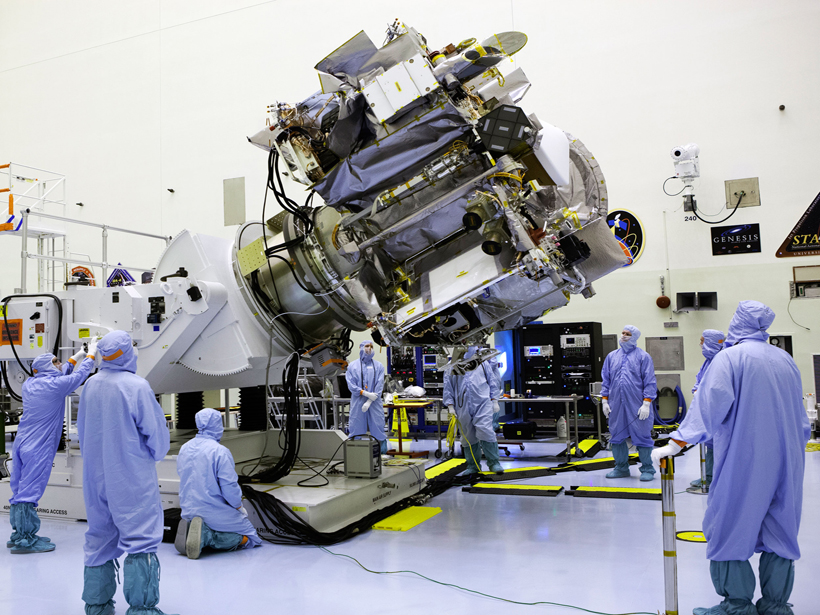I was recently invited to the launch of the OSIRIS-REx mission, a New Frontiers NASA mission to visit the asteroid 101955 Bennu and return a sample of the surface, referred to as the “regolith.” Bennu is a primitive B-type asteroid, a subclass of the common C-type—ors carbonaceous—asteroid. Organic molecules in the regolith and Bennu likely have water-bearing minerals on the surface that may give clues about the origin of water on Earth, so Bennu could contain clues about the origin of life on Earth. Further, Bennu has a small chance of impacting the Earth between 2169 and 2199.
The spacecraft will reach Bennu in 2018 and begin a detailed orbital campaign. Once an appropriate sample site is chosen, the spacecraft will slowly descend to the surface and the device used to collect the samples called the “Touch-and-Go Sample Acquisition Mechanism,” or TAGSAM, will release a burst of nitrogen gas, blowing regolith particles into the TAGSAM. Imaging will ensure that there is adequate sampling; otherwise, the process will be repeated up to three times. After there is an adequate sample, it will be stowed in the Sample Return Capsule and returned to Earth in 2023.
The launch occurred on September 8, 2016. Guests were not only invited to the launch, but also given admission to NASA Kennedy Space Center to visit the space shuttle Atlantis exhibit and rocket park (thank you again Keiko Nakamura-Messenger, lead of the OSIRIS-REx sample site science working group).
On the day of the launch, we were bused out to the Banana Creek viewing site, which is about three miles from the launch pad across the river. The Space-X launch pad, where a rocket had exploded the previous week during testing, was also visible. The day of the launch was beautiful, with very few clouds in the sky. There was nervous anticipation that the launch would go as scheduled. There were approximately 8,000 invited guests, all cheering with excitement.
As the launch time approached, there was an introduction by Scott Messenger (lead of the sample analysis working group) informing us that everything was on track. As tension built in the crowd, there was a check of all systems. The group behind us actually cheered with the announcement of “go!” for each system. Finally, the countdown began for liftoff. At the count of zero, we heard the loud boom from the engines and saw them light up across the river. OSIRIS-REx, sitting on top of an ATLAS V rocket, lifted off the launch pad and the crowd rose to their feet cheering. The sky was so clear that the rocket was easy to follow through the atmosphere. A few minutes into the launch, we heard that OSIRIS-REx had gone supersonic and, shortly after that, booster separation. Again, the crowds screamed as each step progressed perfectly.

OSIRIS-REx is now in the cruise stage on the way to the asteroid Bennu. Instruments are being checked to ensure that nothing was damaged during launch, but, for now, OSIRIS-REx remains on track. Safe flight, OSIRIS-REx!
—Justin Filiberto, Associate Editor, Journal of Geophysical Research: Planets; email: [email protected]
Citation:
Filiberto, J. (2016), To Bennu and back, Eos, 97, https://doi.org/10.1029/2018EO061093. Published on 21 October 2016.
Text © 2016. The authors. CC BY-NC-ND 3.0
Except where otherwise noted, images are subject to copyright. Any reuse without express permission from the copyright owner is prohibited.

